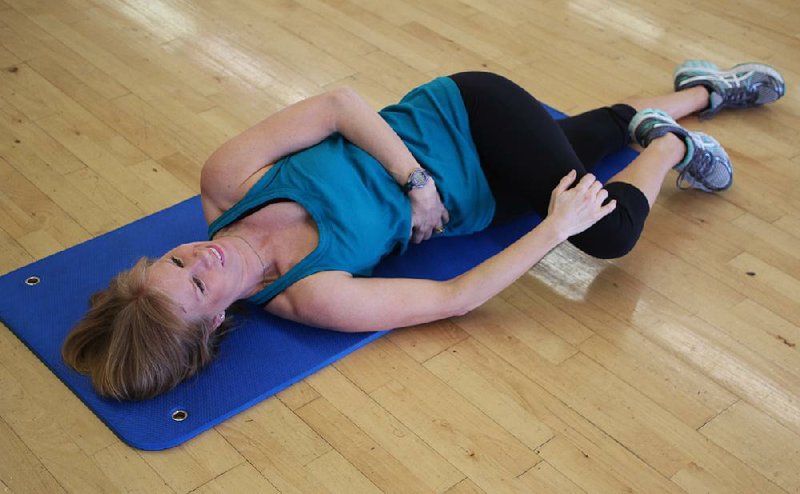Lower back functionality is typically among the lower priority items on clients' fitness agendas.
In more than 15 years, I've worked with only a handful of clients with a specific interest in improving lower back health. Yet almost every exercise program I've ever created includes lower back exercises and/or stretches.
This week, I'll discuss the main ingredients in a comprehensive lower back program and will introduce a stretch that would make a perfect addition.
Flexibility is my first concern with lower back health, which also happens to be the easiest component for people to implement. Stretching the hamstrings, hip flexors and the lower back muscles can be a simple five-minute addition to your fitness routine.
Traditional hamstring and hip flexor stretches held for 20 seconds at a point of mild discomfort work fine.
The lower back muscles also need to be strengthened. Isometric exercises like planks are fantastic options for improving muscular endurance among this muscle group, mostly because planks challenge the muscles to do exactly what they are designed for. The lower back muscles really don't need to produce huge amounts of power, but they do need to be strong enough for long periods of standing or sitting. Without good muscular endurance, the spine is likely to bear too much of the pressure in these postural positions.
Most readers have probably guessed that flexibility and strength would be two of the primary components of a lower back health program, but the next one may be surprising. Massage really can do wonders for improving lower back function. Massage adds to the resilience of the hamstrings, gluteals and the surrounding area.
I'm not necessarily referring to a traditional massage performed by someone else, either. Foam rollers have become extremely popular for helping to release trigger points and massage sore muscle groups. If you haven't used a foam roller before, give it a shot.
This week's exercise is a perfect candidate for the flexibility portion of the lower back program I've described. The Rib Roll will stretch the lower back, hips and even the trunk flexors to some degree.
1. Lie on your back on an exercise mat.
2. Pull your left leg across your body so that your hips roll to the right.
3. Place your right hand on your left knee and hold the leg in place.
4. Grasp the right side of your rib cage with your left hand.
5. Inhale, then exhale and slowly pull your torso to the left until you feel a good stretch in your hips, lower back and spine.
6. Hold for 10 seconds, then repeat with the opposite side. Perform four repetitions per side.
The Rib Roll is appropriate for all fitness levels and can be done almost anywhere.
There's one other key that may help you relax into the stretch a bit more. If you exhale as you begin the stretch, more air will expel from your lungs and you may be able to achieve a little greater range of motion. You can use this trick during all stretches, but it's particularly useful when stretching the torso. Enjoy!
Matt Parrott has a doctorate in education (sport studies) and a master's in kinesiology and is certified by the American College of Sports Medicine.
ActiveStyle on 03/30/2015

